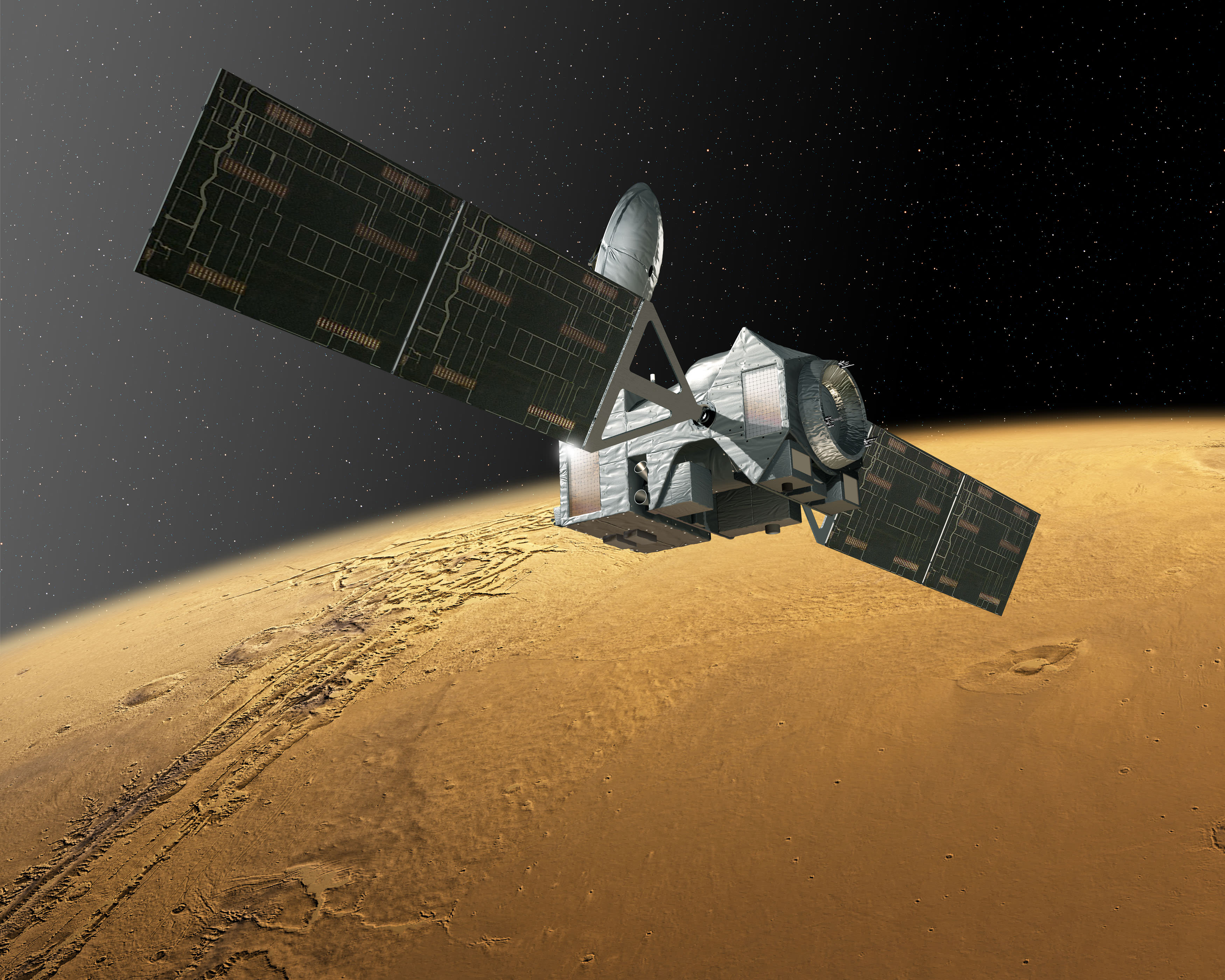Has
life
ever existed
on Mars
? Or anywhere beyond Earth?
Answering that question is one of the most profound scientific inquiries of our time.
Europe and Russia have teamed up for a bold venture named ExoMars that's set to
blast off
in search of Martian life in about two and a half years.
Determining if life ever originated on the Red Planet is the primary goal of the audacious two pronged ExoMars missions set to launch in 2016 & 2018 in a partnership between the European and Russian space agencies, ESA and Roscosmos.
In a major milestone announced today (June 17) at the Paris Air Show, ESA signed the implementing contract with Thales Alenia Space, the industrial prime contractor, to start the final construction phase for the 2016
Mars mission
.
"The award of this contract provides continuity to the work of the industrial team members of Thales Alenia Space on this complex mission, and will ensure that it remains on track for launch in January 2016," noted Alvaro Giménez, ESA's Director of Science and Robotic Exploration.
[caption id="attachment_102991" align="aligncenter" width="580"]
ExoMars 2016 Mission to the Red Planet. It consists of two spacecraft - the Trace Gas Orbiter (TGO) and the Entry, Descent and Landing Demonstrator Module (EDM) which will land. Credit: ESA[/caption]
The ambitious 2016 ExoMars mission comprises of both an orbiter and a lander- namely the methane sniffing Trace Gas Orbiter (TGO) and the piggybacked Entry, Descent and Landing Demonstrator Module (EDM).
ExoMars 2016 will be Europe's first spacecraft dispatched to the Red Planet since the 2003 blast off of the
phenomenally successful Mars Express
mission - which just celebrated its 10th anniversary since launch.
Methane (CH4) gas is the simplest organic molecule and very low levels have reportedly been detected in the thin Martian atmosphere. But the data are not certain and its origin is not clear cut.
Methane could be a marker either for active living organisms today or it could originate from non life geologic processes. On Earth more than 90% of the methane originates from biological sources.
The ExoMars 2016 orbiter will investigate the source and precisely measure the quantity of the methane.
The 2016 lander will carry an international suite of science instruments and test European landing technologies for the 2nd ExoMars mission slated for 2018.
[caption id="attachment_102992" align="aligncenter" width="524"]
The 2016 ExoMars Trace Gas Orbiter will carry and deploy the Entry, Descent and Landing Demonstrator Module to the surface of Mars. Credit: ESA-AOES Medialab[/caption]
The 2018 ExoMars mission will deliver
an advanced rover
to the Red Planet's surface. It is equipped with the first ever deep driller that can collect samples to depths of 2 meters where the environment is shielded from the harsh conditions on the surface - namely the constant bombardment of cosmic radiation and the presence of strong oxidants like perchlorates that can destroy organic molecules.
ExoMars was originally a joint NASA/ESA project until
hefty cuts to NASA's budget
by Washington DC politicians
forced NASA to terminate
the agencies involvement after several years of detailed work.
[caption id="attachment_102995" align="alignleft" width="350"]
Elements of the ExoMars program 2016-2018. Credit: ESA[/caption]Thereafter Russia agreed to take
NASA's
place and provide the much needed funding and rockets for the pair of
planetary
launches scheduled for January 2016 and May 2018.
NASA does not have the funds to launch another Mars rover until 2020 at the earliest - and continuing budget cuts threaten even the 2020 launch date.
NASA will still have a small role in the ExoMars project by funding several science instruments.
The ExoMars missions along with NASA's ongoing
Curiosity
and
Opportunity
Mars rovers will pave the way for Mars Sample Return missions in the 2020's and eventual
Humans voyages to the Red Planet
in the 2030's.
And don't forget to "Send Your Name to Mars" aboard NASA's MAVEN orbiter- details
here
. Deadline: July 1, 2013
Ken Kremer
……………. Learn more about Mars, Curiosity, Opportunity, MAVEN, LADEE and NASA missions at Ken's upcoming lecture presentations
June 23: "Send your Name to Mars on MAVEN" and "CIBER Astro Sat, LADEE Lunar &
Antares
Rocket
Launches
from Virginia"; Rodeway Inn, Chincoteague, VA, 8 PM
 Universe Today
Universe Today
